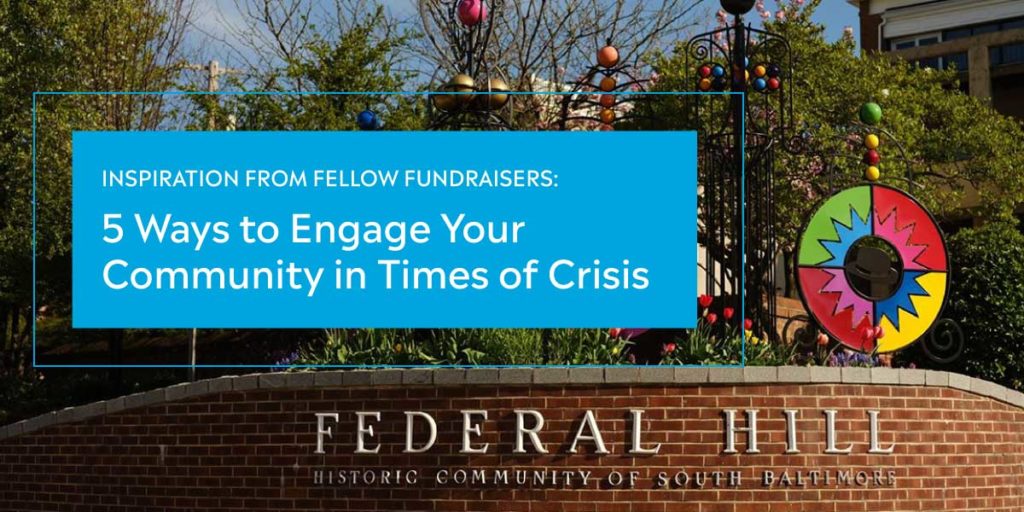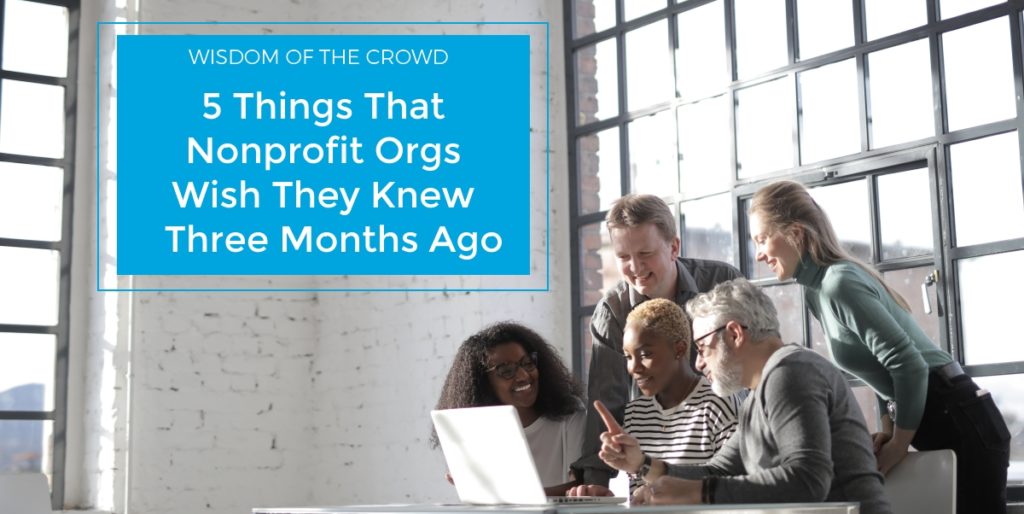
For nonprofits, it can be easy to focus on the mechanics of running an organization and unintentionally overlook the role that communication plays in your success. With innumerable outreach platforms available at their disposal, nonprofits are in a good position to maximize productivity and reach their goals, but only if they use these channels in a strategic way.
Strong communication skills are a vital component for nonprofit board members. By keeping an open line of communication, your members will cultivate a spirit of collaboration, enhance decision-making abilities, and stay true to the organization’s mission while protecting its reputation. If there’s a lack of efficient communication in the boardroom, it can lead to serious issues that run deeper than ineffective meetings.
With all that rides on effective board operations, communication is not an area that nonprofits can afford to overlook. So your board can continue guiding you toward fulfilling your mission, we’ve compiled four easy-to-implement tips for improved board member communication:
- Choose the right board communication tools.
- Focus on developing trusting relationships.
- Clearly define roles and responsibilities.
- Proactively document meetings.
Ready to foster a spirit of collaboration among board members? Let’s dive in!

1. Choose the right board communication tools.
Nonprofit boards often find it important to have a viable platform that enables seamless communication among its members. The software you use to communicate with your board serves as the foundation of your strategy. As such, you should spend time choosing the right tools to streamline operations, which will prove invaluable as your board grows and pursues its strategy.
Overall, an effective nonprofit board portal will centralize communication, so board members can communicate both during and between meetings. This way, you can focus on leading and your board can focus on governing.
If you’ve never invested in board software or you’re looking to revamp your toolkit, you may need assistance to kick off your search. Let’s explore a few top features that will help your team streamline communications:
- Agenda building tools – Make your meetings more focused by creating a strong agenda. Your board software should allow you to quickly build and share meeting agendas so everyone can come fully prepared with insightful thoughts. Plus, some platforms will allow you to take minutes directly on your agenda, so you can ensure every topic is thoroughly covered.
- Meeting scheduling tools – Determining an agreeable time can be one of the most frustrating parts of lining up meetings. With a board portal that offers scheduling capabilities, you can easily locate the best possible meeting time for each of your members and save time that can be better used discussing important initiatives.
- Video capabilities – Right now, organizations are forced to comply with social distancing recommendations in order to protect their board members. This means shifting to virtual meetings for the time being, which removes a much-needed face-to-face element. Ensure your board meeting software offers video conferencing tools so that board members can accurately gauge each other’s thoughts throughout meetings. Learn more effective tactics and tools for virtual meetings with this helpful guide.
Prioritizing the above features in your search will serve as a great starting point. Whether during meetings or between them, your board must have a flexible and reliable way to communicate. Otherwise, time-sensitive decisions will be delayed and your nonprofit will surely experience setbacks.

2. Focus on developing trusting relationships.
Your board’s communication relies heavily on strong relationships and a foundation of trust. However, this doesn’t occur overnight. Rather, trust is developed over time through mutual experiences and open conversations. By intentionally developing relationships, your board members will feel appreciated and will likely want to continue volunteering in order to advance your cause well into the future.
To maximize the effectiveness of your communication plan, try out the following tips for developing trustworthy relationships:
- Communicate often, not just during board meetings. Having intentional conversations around initiatives can put you on the path to success. Sit down with individual board members to gauge their thoughts on organizational improvements as well as potential challenges that they could see arising. You may even consider lining up get-togethers outside of the boardroom (such as an annual retreat) to engage in some team-building exercises in a more relaxed environment. These steps will proactively communicate that you value your volunteer board members’ hard work.
- Assure board directors that communication is confidential. Much of the nonprofit board’s work is confidential. To protect sensitive information, ensure your board portal enables security features and allows members to communicate without worry. This will add a level of trust among members and open up the floor for proactive discussion between meetings.
- Create a culture of collaboration. A positive boardroom culture involves a certain level of inclusiveness and openness to all perspectives. It should reflect a collegial environment where full participation and dissenting opinions are encouraged and accepted at face value, rather than being immediately shot down. An open environment will work wonders for sparking motivation among your board. Remember, board directors are expected to support decisions even if they disagree with them behind closed doors, so do your best to invite everyone to voice their opinions.
The nature of your relationships is a good indicator of whether or not your board exercises good communication. By intentionally building trustworthy relationships, you’ll create a collaborative team that’s willing to work together to advance your cause.

3. Clearly define roles and responsibilities.
One fatal mistake that some nonprofits make is glossing over the duties and expectations for new volunteer board members and leadership. For instance, it’s often expected that directors make personal donations and use their personal and professional networks to advance the organization’s mission. It’s best to communicate your expectations upfront so as not to run into confusion later. Otherwise, you risk compromising members’ experiences and hosting ineffective meetings.
Beyond defining day-to-day responsibilities, it’s important to also define who’s responsible for one-off activities. Let’s explore two types of tasks you may encounter:
- In-meeting tasks. Prior to meetings, it’s important to clarify who’s responsible for tasks during the meeting. For instance, a board chair should be in charge of running the meeting and transitioning between topics on the board meeting agenda, while the executive secretary should take minutes.
- Follow-up tasks. Productive meetings often produce countless follow-up tasks, each of which is important to the continued success of your organization. The moment a new project arises, be sure to delegate who will be responsible for completing it. Streamline the process by assigning these tasks and setting deadlines within your nonprofit board software.
When you have a particularly productive volunteer board, new tasks will pop up quite often. Get ahead by making sure all board members understand what’s expected of them upfront. As one of the first steps any nonprofit should take in volunteer management, this can prevent major challenges and misunderstandings about who is responsible for completing what tasks.
Continue exploring the components of effective coordination with this volunteer management guide from Mobilize, which details easy strategies for engaging these individuals.

4. Proactively document meetings.
During each of your board meetings, a slew of decisions will likely be made, whether they’re pertaining to new fundraising endeavors, upcoming projects, or other involvement opportunities. As changes are made, make sure they’re properly documented in the minutes and distributed in a timely manner. Otherwise, it may result in confusion when it comes to carrying out those updates.
Further, proper documentation makes it easier to communicate decisions to those who were unable to attend. The goal of your minutes should be to make them clear enough that someone can understand them several years down the line. To accomplish this, here are a few ways to ensure all pertinent information is documented throughout each of your board meetings:
- Keep a list of all attendees. Make note of who’s in attendance, including members of the board and any non-voting participants with their names, titles, and reasons for attending.
- Keep a record of motions. This includes the names of who made the motion and who seconded it as well as the number of votes in favor of the motion, the number of votes against the motion, and the number of abstentions.
- Document the rationale behind key decisions. Doing so will help to communicate why certain decisions were made to third-party entities. For instance, in the event of any legal complications, rationales will back up your actions.
- Use your agenda as an outline. This will provide your minute-taker with a predefined structure, so they can focus on accurately capturing details during meetings. This way, they won’t overlook any key discussions.
By documenting pertinent changes as they arise, each board member will stay up-to-date and be well prepared for future decision-making, regardless of whether they were able to attend a meeting. Learn more about the practice of taking minutes with Boardable’s complete guide to board meeting minutes. Knowing what to include and what to exclude in your minutes will prove invaluable as your board continues its work.
Clear and timely board communication is a key contributor to board effectiveness. Remember, it all starts with effective communication tools and requires you to develop a foolproof plan. By empowering your board members with the tools and tips they need to succeed, they can get back to focusing on what matters: furthering your work and helping you to achieve your mission.
Over time, you’ll come to realize that good communication will fuel members’ passion for your nonprofit’s cause. By intentionally using impactful communication strategies and methods, your board will transform its efforts in no time.

About Jeb Banner:
Jeb is the founder and CEO of Boardable, a nonprofit board management software provider. He is also the founder of two nonprofits, The Speak Easy and Musical Family Tree, as well as a board member of United Way of Central Indiana and ProAct. Jeb is based in Indianapolis, Indiana.
As the CEO and a Founder of Boardable, Jeb is passionate about community nonprofits, entrepreneurship, and more. He also founded SmallBox, a creative agency for mission-driven organizations, and is co-founder of The Speak Easy and founder of Musical Family Tree, both 501(c)(3) nonprofits.
About Boardable: Boardable is an online board management portal that centralizes communication, document storage, meeting planning, and everything else that goes into running a board of directors.









